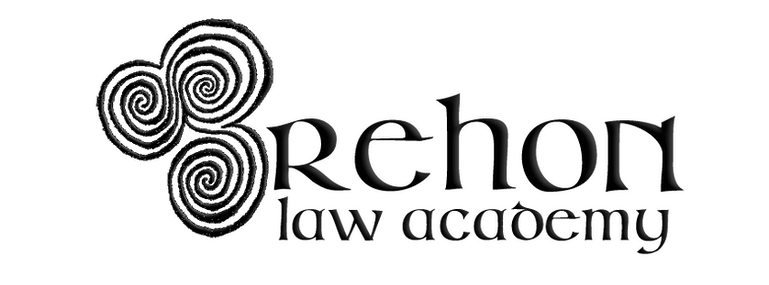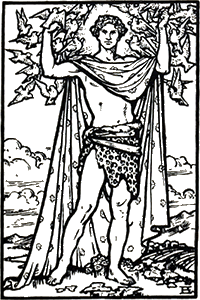Ancient Irish Olympics - The Lughnasa Games at Telltown
July 14, 2023

The Telltown or Tailtiu Games were said to have been instituted by the Gaelic god Lú Lamhfada Samildanách – Lugh the Long-Armed Master of the Arts, and are considered to be the Irish Olympics Games.
They predate the Greek Olympics by about 1200 years and it could be reasonably speculated that the Irish Telltown Games were the inspiration for the later Greek and, as such, modern Olympic games. More than a just battles of skill and brawn the Telltown Games were a celebration of Irish culture and its arts.
During this time the people of Ireland would travel to the Áenach Tailteann or Telltown Fair to sell and trade, to court young women and make marriage arrangements, or to enter into contracts for winter accommodation and work. But the main attraction was the games themselves as thousands gathered to watch the best of Ireland’s youth pit their wits and strength against each other in the hopes of obtaining the glory and reputation for themselves and their tribal kin-groups.
“From time immemorial the sons of Erin have played a most conspicuous part in every branch of athletic sports. […] When and where did athletic games originate? In Ireland, almost 2,000 years before the Christian era. The “Annals of the Four Masters” tell us that the Tailtan [sic] games were instituted in ancient Ireland at a place now known as Telltown. […] Those games developed mighty heroes, the greatest of whom was Cuchullain, who has been aptly called the Hercules of Hibernia.”
- Thomas Lonergan.

The God Lugh and the Goddess Tailtiu
The Originators of the Telltown Games
The games are named after the goddess Tailtiu the wife of Eochaid mac Eirc, last of the Fir Bolg High Kings and beloved foster-mother of Lugh who established the celebrations in her honour; although in modern times people tend to mistakenly associate this festival primarily with Lugh, not Tailtiu. They took place every three years around August to mark the year’s first harvest, to this day the Gaelic word for August is Lughnasa named after Lugh. It was traditionally a month of reaping and celebrations and Lughnasa was one of the great fire festivals that took place throughout the year.
They took place close to the ancient seat of power on the Hill of Tara in County Meath at a place that to this day still bears the anglicised name for Tailtiu – Telltown and lasted until 1169AD with the coming of the Anglo-Norman invasion, a time that marks the beginning of the erosion of native Irish culture.
“While [Lugh] was king, his foster-mother Taillte, daughter of Magh Mor, the Great Plain died. And before her death she bade her husband Duach the Dark, he that built the Fort of the Hostages in Teamhair, to clear away the wood of Cuan, the way there could be a gathering of the people around her grave.
So he called to the men of Ireland to cut down the wood with their wide-bladed knives and bill-hooks and hatchets, and within a month the whole wood was cut down.
And Lugh buried her in the plain of Midhe [Meath], and raised a mound over her, that is to be seen to this day. And he ordered fires to be kindled, and keening [mourning] to be made, and games and sports to be held in the summer of every year out of respect to her.
And the place they were held got its name from her, that is Taillten (Telltown)."
- Lady Gregory, Gods and Fighting Men.

Tailtiu herself is considered the goddess of Irish sovereignty and like most goddesses she exhibits the characteristics of fertile land and a fruitful harvest. Given the themes of harvest and fertility it seems fitting that the month of celebrations should have this aspect of a female deity in harmony to counter-balance with the male deity in the form of Lugh.
Modern Attempts to Revive the Telltown Games


In 1924, having obtained independent nationhood, there was an effort to revive the ancient games and photos from the time give us a rare glimpse or an echo of an even earlier past. In one such photo two young men are dressed in warrior’s garb, each with an Irish wolf-hound at his side, in another we see women dressed in traditional clothes and in others still we see people resembling druids. While being a 20th century interpretation of how the ancients might have dressed and acted these photos probably the closest thing we have to an authentic image of the likes of the Red Branch Knights of Cuchullain or na Fíanna of Fionn MacCumhail.


The revival of the Telltown games happened during the same year as the Games of the VIII Olympiad, or simply the Olympics, that were held in Paris that year. At this time there was a hope among the Irish that the Telltown Games would resume their place as the original and pre-dominating athletics competition with talks of opening entry for everyone regardless of nationality, not just the Irish. A Dáil (Irish Parliament) debate dated 8th June 1922 states:
"We have got representations from America to the effect that it would be advisable to depart from the idea of confining the Tailteann games to the Irish race and seeing that they predated the Greek Olympic by a thousand years we should be justified in entering upon a more varied programme."
(Source).
The Tailteann Games were more than a mere sporting competition, though. They were a testament to the world that Ireland had returned, and that she hasn't forgotten her culture and history; that was at least as rich as Ancient Greece and Rome, if not more so.
However, the Irish Civil War of 1922-23 caused the revival to be delayed and the first of the revived games or “meeting of the Irish race” was in 1924 and for this purpose the Hogan Stand was built in Croke Park, the home of the Gaelic Athletics Association, but further events took place every four years until 1932. Entry was open to anyone of Irish descent and participants came from all over the world to take part or to watch the sports. Would they be revived again? We would like to see this happening but know it would only come at a time when the modern Irish people wish to connect and assert their true native heritage once again.
This TG4 documentary covers the rise and fall of this great national celebration and shows how the advent of Fianna Fáill and their allegiance to the Catholic Church led to it's ultimate fading back out of Irish life only to be confined to the old film reels that have been dusted off and represented in this captivating piece.
WATCH Aonach Tailteann - TG4 Documentary here:
















